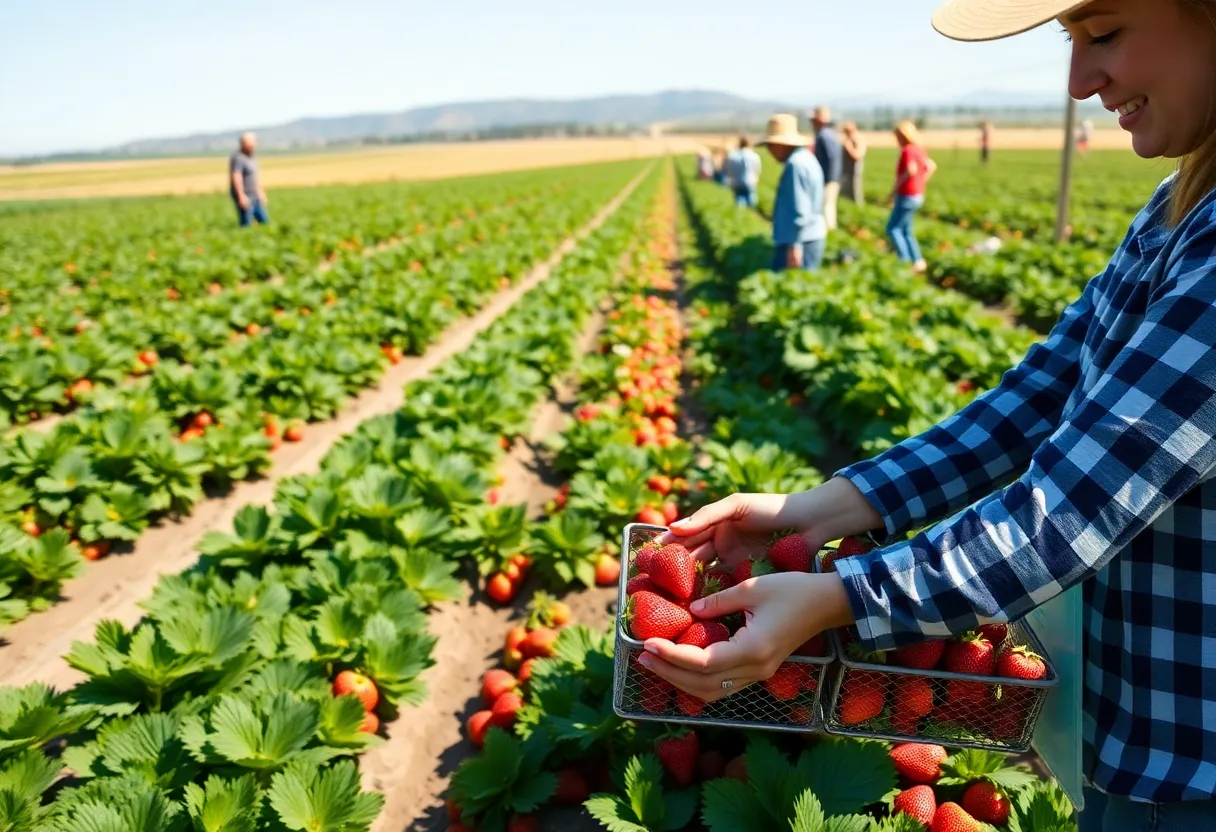News Summary
Japanese American farmers played a crucial role in California’s strawberry industry before World War II, controlling 90% of the state’s production. The community faced immense challenges during the war, including forced incarceration, which severely impacted strawberry yields. Despite these hardships, the farmers returned post-war and revitalized the industry, ultimately producing 81 million pounds by 1950. Their legacy continues today, emphasizing the importance of diversity and community in agriculture.
Irvine, California – The story of Japanese American farmers is a vital chapter in California’s agricultural history, particularly within the state’s strawberry industry. Before World War II, Japanese immigrants contributed significantly to strawberry farming, controlling approximately 90% of California’s strawberry production. However, this vibrant agricultural community faced significant disruption during the war when the U.S. government, through Executive Order 9066, forcibly incarcerated over 120,000 Japanese Americans, leading to a dramatic decline in strawberry production.
In the midst of the forced detainment, many Japanese farmers abandoned their crops just before harvest, which contributed to a staggering 75% drop in production. By the height of the war, California’s strawberry yield had plummeted to a mere 25% of its previous levels. The repercussions of this loss rippled across the agriculture sector, resulting in a significant impact on both local economies and food supplies.
After the war, some Japanese American farmers returned to agriculture, and their efforts played a pivotal role in the resurgence of the strawberry industry. By 1950, California’s strawberry harvest rebounded dramatically, reaching 81 million pounds, which was four times higher than the production levels recorded before the war. This resurgence underscores the lasting influence and resilience of the Japanese American farming community.
One prominent representative of this legacy is Tanaka Farms, located in Irvine, California, operated by Glenn Tanaka. The Tanaka family has a strong history in strawberry farming that dates back to the post-war era. Over time, Tanaka Farms not only transitioned into wholesale produce sales but also embraced agritourism. Today, the farm invites visitors to participate in activities like pick-your-own strawberries and pumpkins, merging agricultural practices with community engagement.
In addition to agritourism, Tanaka Farms has implemented educational visits for local schools, enhancing its relationship with the community and demonstrating the educational potential of agriculture.
Historical Context of Japanese American Farmers
The challenges and triumphs of Japanese American farmers are set against the backdrop of broader social and legal obstacles. Historical policies, such as the Japanese Exclusion Act of 1924 and California’s Alien Land Law of 1913, hindered Japanese ownership of land and restricted their farming capabilities. These discriminatory regulations limited opportunities for many Japanese immigrants who had come to California, seeking a better life through agriculture.
Despite these barriers, Japanese immigrants, who were often raised in small-scale farming environments in Japan, found success in the strawberry market. The favorable California climate and fertile soil provided ideal conditions for strawberry cultivation, leading many farmers to excel in this lucrative industry.
Ongoing Legacy
The legacy of Japanese American farmers is still evident today, as significant portions of the strawberries sold across the United States can trace their roots back to the hard work and resilience of these early pioneers. Their contributions not only shaped California’s agricultural landscape but also reflect a broader narrative of struggle, community strength, and revival.
As the strawberry industry continues to thrive, acknowledgment of its historical influences is crucial. The story of Japanese American farmers serves as a reminder of the importance of diversity in agriculture and the lasting impact that communities can have on local economies and cultures.
Deeper Dive: News & Info About This Topic
HERE Resources
Additional Resources
- LAist: The History of Southern California’s Strawberry Fields and Japanese Farmers
- Google Search: Japanese American farmers
- Civil Eats: Alien Land Laws and Their Impact
- Encyclopedia Britannica: Japanese Exclusion Act
- AsAm News: Lost City of Tropico & Japanese American History
- Google News: Japanese American history

Author: STAFF HERE COSTA MESA WRITER
The COSTA MESA STAFF WRITER represents the experienced team at HERECostaMesa.com, your go-to source for actionable local news and information in Costa Mesa, Orange County, and beyond. Specializing in "news you can use," we cover essential topics like product reviews for personal and business needs, local business directories, politics, real estate trends, neighborhood insights, and state news affecting the area—with deep expertise drawn from years of dedicated reporting and strong community input, including local press releases and business updates. We deliver top reporting on high-value events such as the OC Fair, Concerts in the Park, and Fish Fry. Our coverage extends to key organizations like the Costa Mesa Chamber of Commerce and Boys & Girls Clubs of Central Orange Coast, plus leading businesses in retail, fashion, and technology that power the local economy such as Vans, Experian, and South Coast Plaza. As part of the broader HERE network, including HEREAnaheim.com, HEREBeverlyHills.com, HERECoronado.com, HEREHollywood.com, HEREHuntingtonBeach.com, HERELongBeach.com, HERELosAngeles.com, HEREMissionViejo.com, HERESanDiego.com, and HERESantaAna.com, we provide comprehensive, credible insights into California's dynamic landscape.





